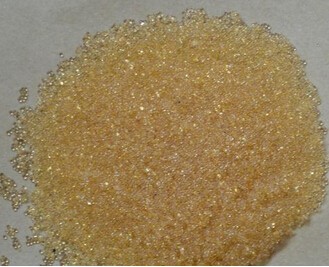Sichuan cation exchange resin is afraid of these two kinds of pollution, namely colloidal silica pollution and iron pollution. Here the seriousness of these two kinds of pollution is mainly introduced.
I. Colloidal Silicon Contaminated Cationic Resin
Ion exchange resins can not exchange with the total silicic acid in nature, but the silicic acid in the colloid will be greatly reduced after the natural waterborne resin, of course, this factor is closely related to mechanical filtration and adsorption.
If the colloidal silicic acid does not pollute the resin under normal conditions, if there is no suitable regeneration conditions, there will be a reduction in the regeneration dose. Of course, if the regeneration temperature and the flow rate of the regeneration solution decrease, the resin will also be polluted.
In recent years, the cationic exchange resin in Sichuan has been polluted a lot, so our country adopts a new technology of ultrasonic cleaning to clean the resin.

II. Iron contamination of cation exchange resins
In the process of ion exchange, it is very common for ion exchange resins to be polluted by metal ions, among which the greatest pollution is compound pollution. But if the anion resin is most polluted, the biggest reason is that the alkali of the regenerated anion resin is very impure, and there are too many iron compounds left in it, so it will cause pollution.
Contaminated cationic resins will have darker colours, then worse performance and lower regeneration efficiency. However, acid pickling is the most commonly used method to treat this kind of contamination.
It should be emphasized that if the anion resin is cleaned by acid pickling method, ion exchange will be added to the resin, so chemical pure hydrochloric acid must be used.
